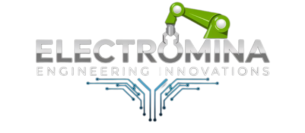Welding is an essential process in various industries, from automotive and aerospace to electronics and construction. Choosing the right welding method depends on the specific application, material type, and precision required. This article explores the key differences between MIG (Metal Inert Gas), TIG (Tungsten Inert Gas), and laser welding, highlighting their advantages, applications, and limitations.
1. What Is MIG Welding?
MIG welding, also known as Gas Metal Arc Welding (GMAW), uses a continuous wire electrode fed through a welding gun. This process involves shielding gas to protect the weld pool from contamination.
Advantages:
- Fast and efficient, ideal for high-production environments.
- Easy to learn and use, suitable for beginners.
- Works well with thick materials like steel and aluminum.
Applications:
- Automotive manufacturing.
- Construction and heavy equipment repairs.
2. What Is TIG Welding?
TIG welding, or Gas Tungsten Arc Welding (GTAW), utilizes a non-consumable tungsten electrode. This method offers precise control over the welding process, making it suitable for thinner materials and intricate projects.
Advantages:
- Produces high-quality, clean welds.
- Can weld a wide range of metals, including exotic alloys.
- Ideal for delicate or detailed work.
Applications:
- Aerospace and aviation industries.
- Fabrication of medical devices and instruments.
3. What Is Laser Welding?
Laser welding employs a high-powered laser beam to fuse materials. It offers unmatched precision and speed, especially in automated setups.
Advantages:
- Minimal heat distortion, ideal for sensitive components.
- Exceptional precision for micro-welding.
- Can join dissimilar materials.
Applications:
- Electronics and PCB assembly.
- Jewelry and fine metalworking.
- High-volume industrial manufacturing.
Key Differences Between MIG, TIG, and Laser Welding
| Feature | MIG Welding | TIG Welding | Laser Welding |
|---|---|---|---|
| Precision | Moderate | High | Very High |
| Speed | Fast | Slow | Very Fast |
| Ease of Use | Easy | Difficult | Requires Expertise |
| Material Thickness | Thick Materials | Thin and Thick | Thin and Delicate |
| Cost | Affordable | Moderate | Expensive |
Which Welding Method Should You Choose?
The right welding technique depends on your project’s requirements:
- Choose MIG welding for speed and cost-effectiveness in large-scale projects.
- Opt for TIG welding for precision and quality, especially with intricate designs.
- Go for laser welding for advanced, high-precision applications in electronics or medical devices.
Conclusion
MIG, TIG, and laser welding each offer unique benefits tailored to specific applications. Understanding their differences can help you make an informed decision for your project. Whether you’re building robust steel structures or creating intricate electronic components, the right welding method ensures efficiency and quality.



